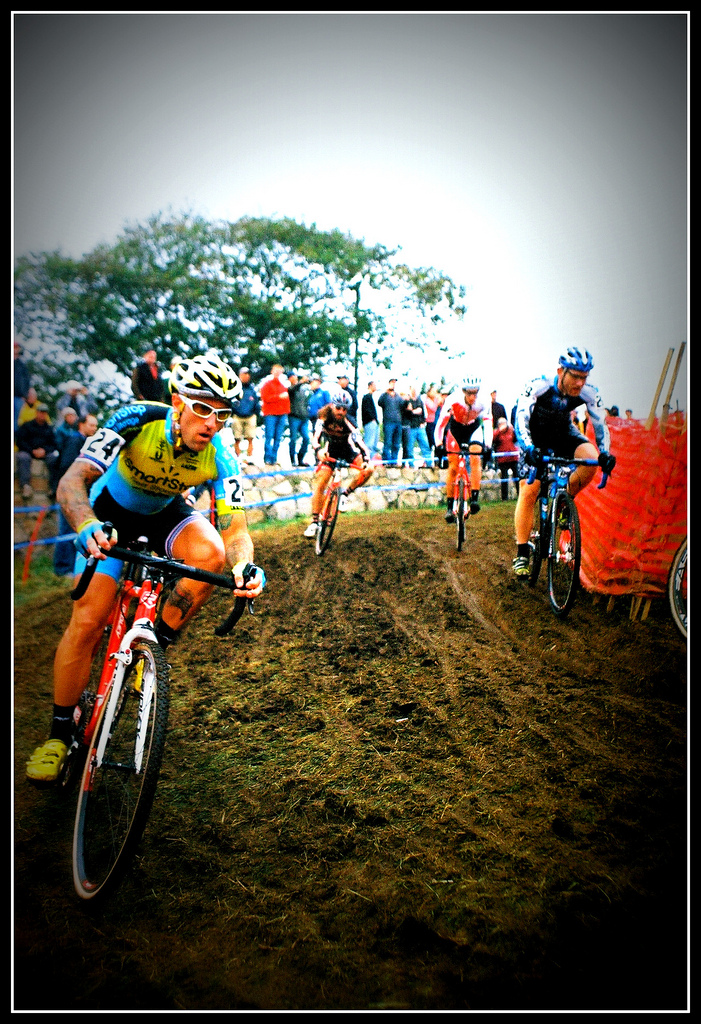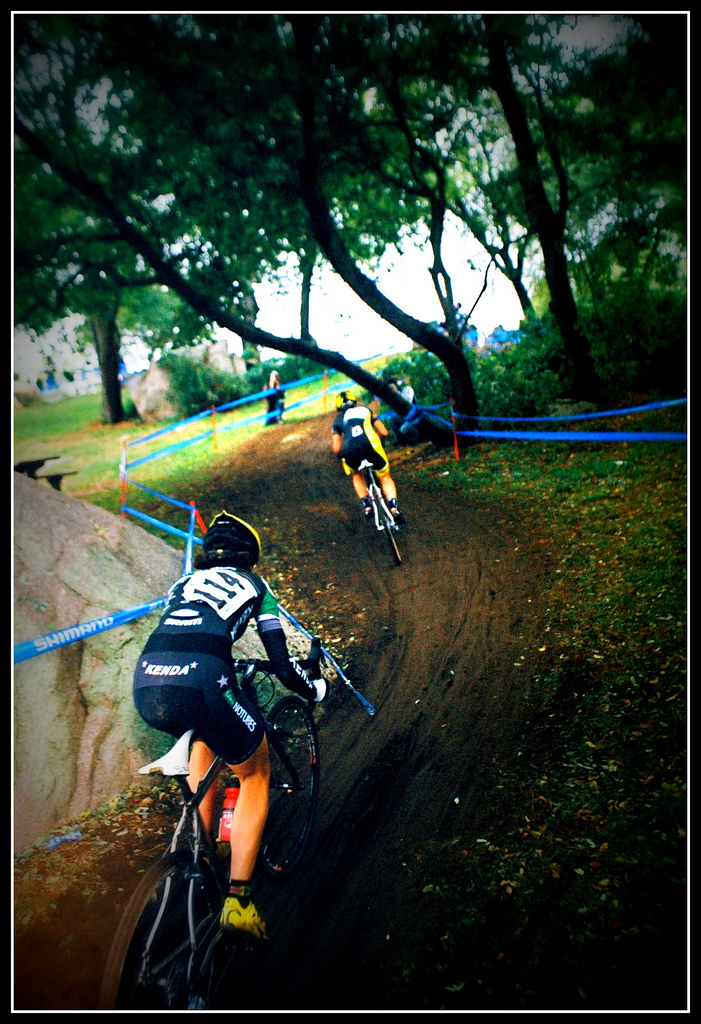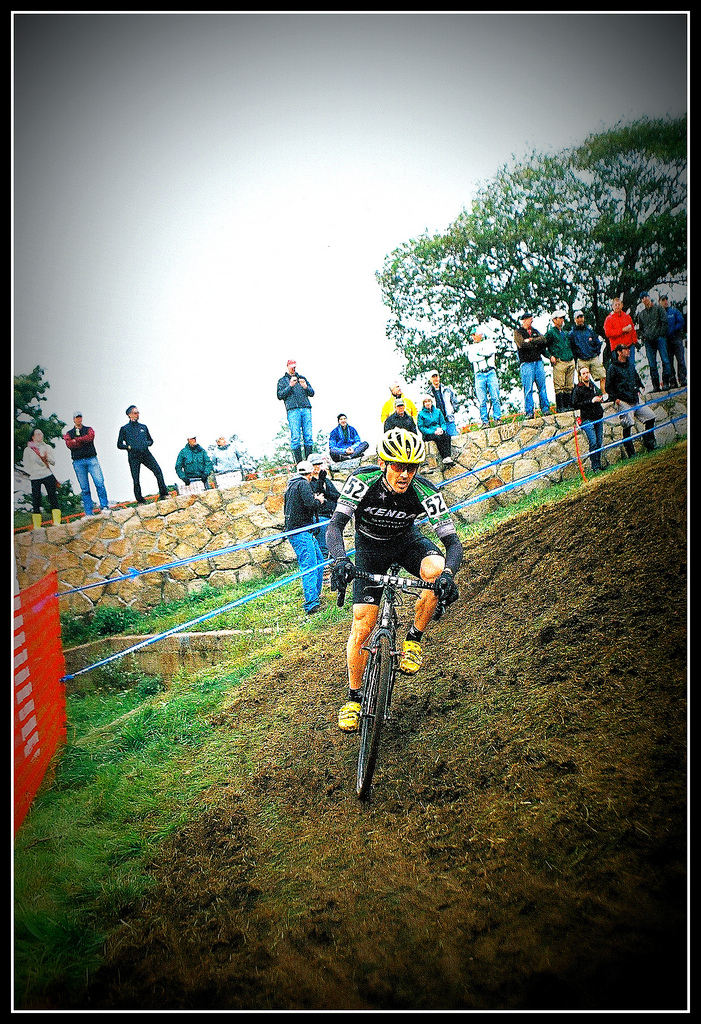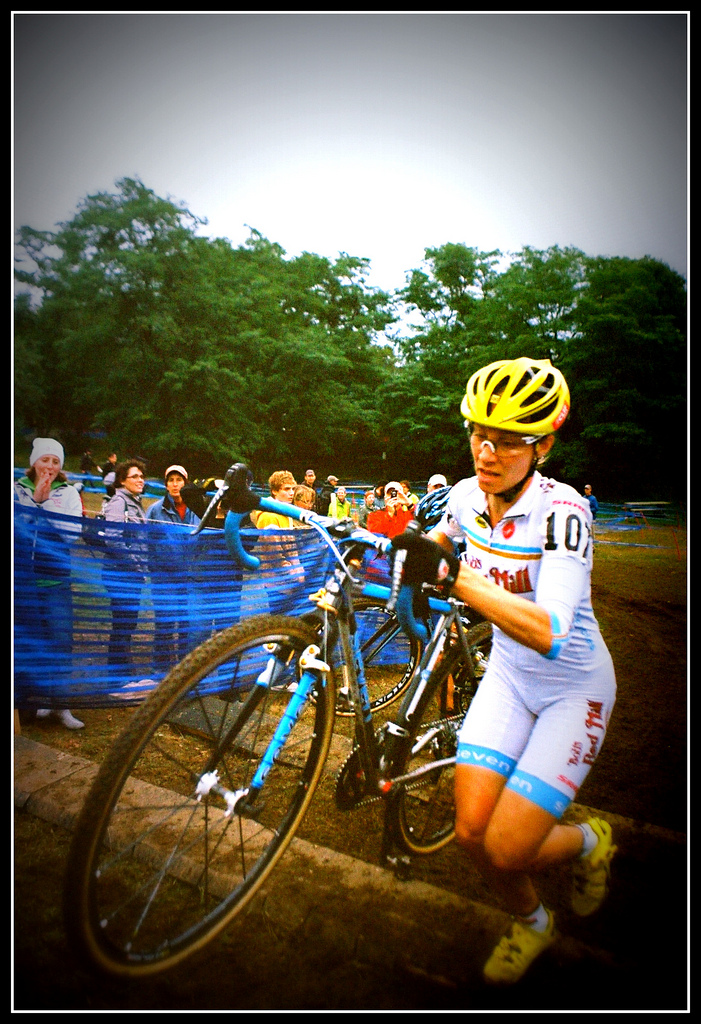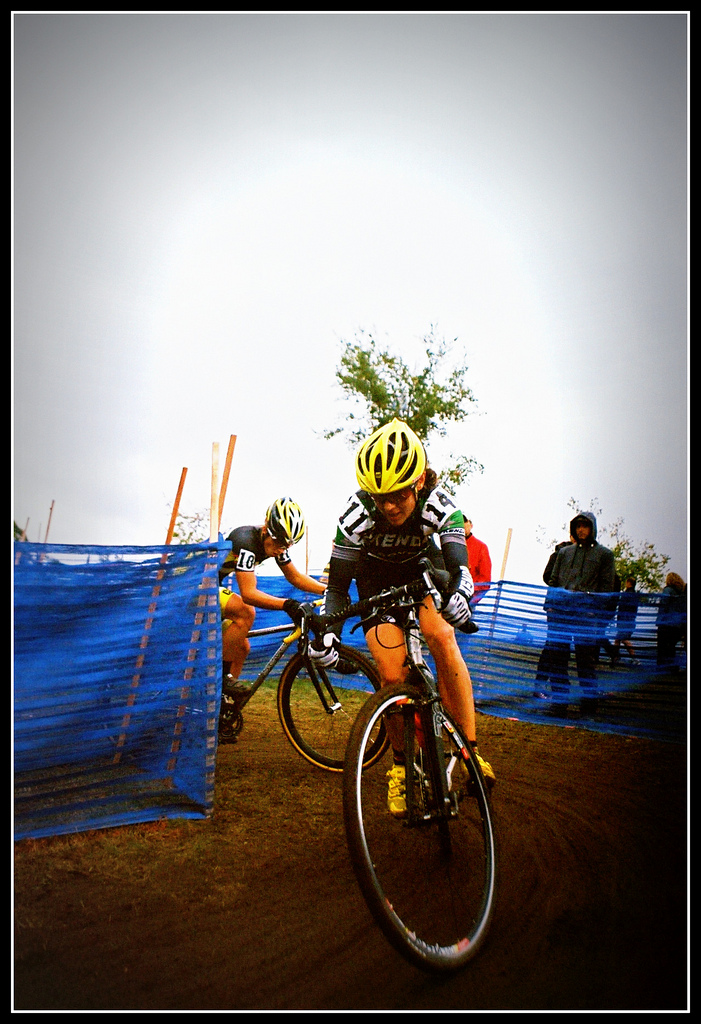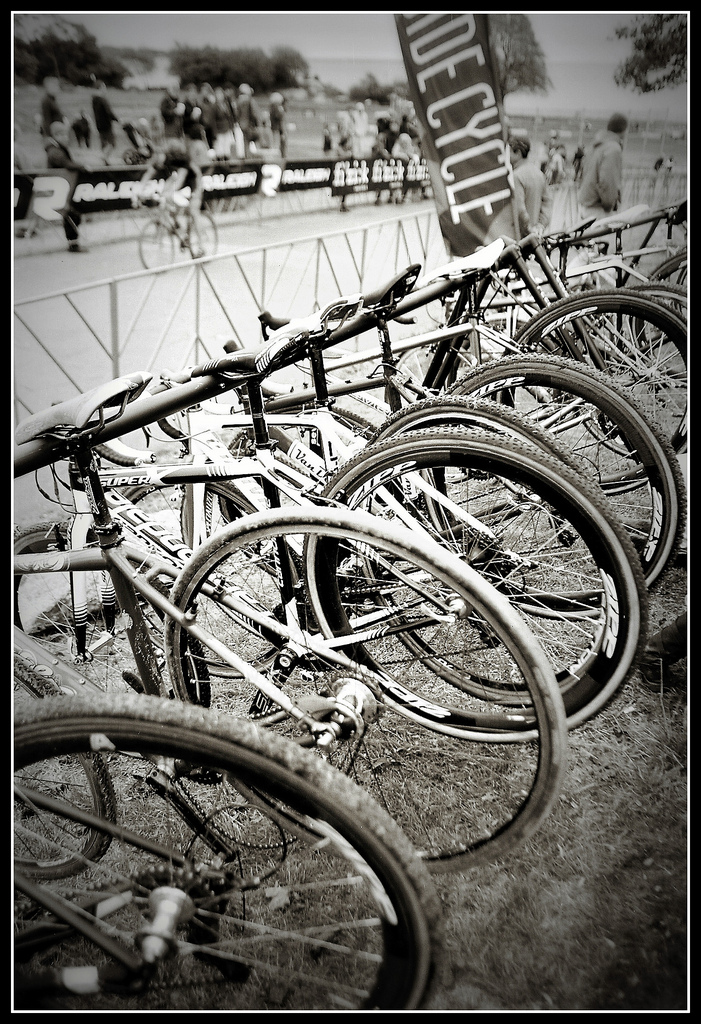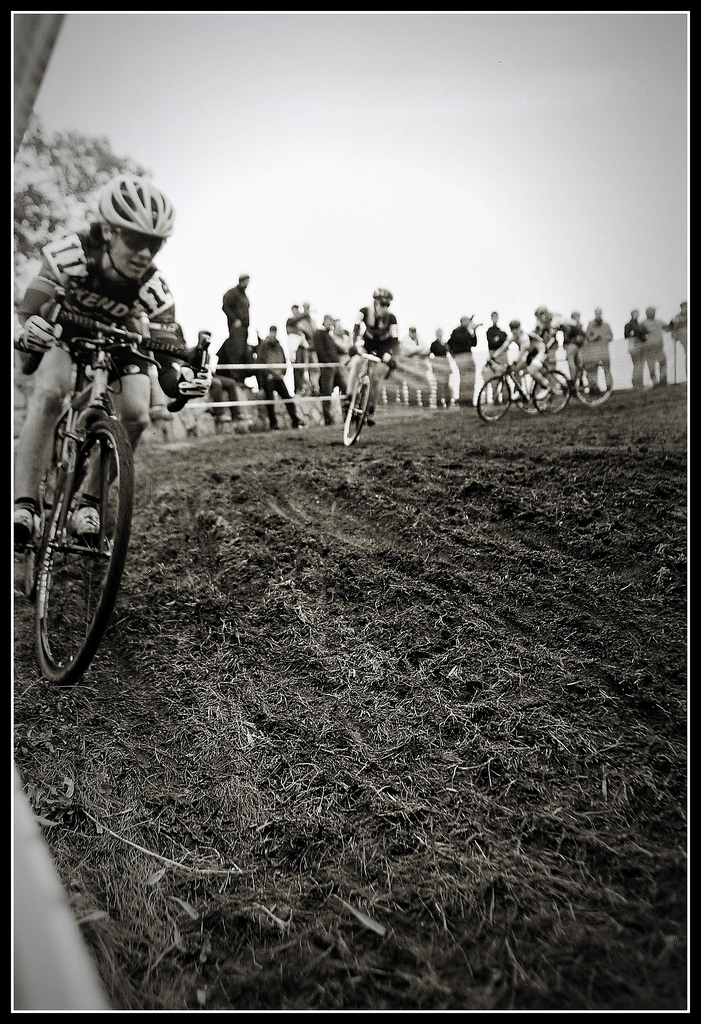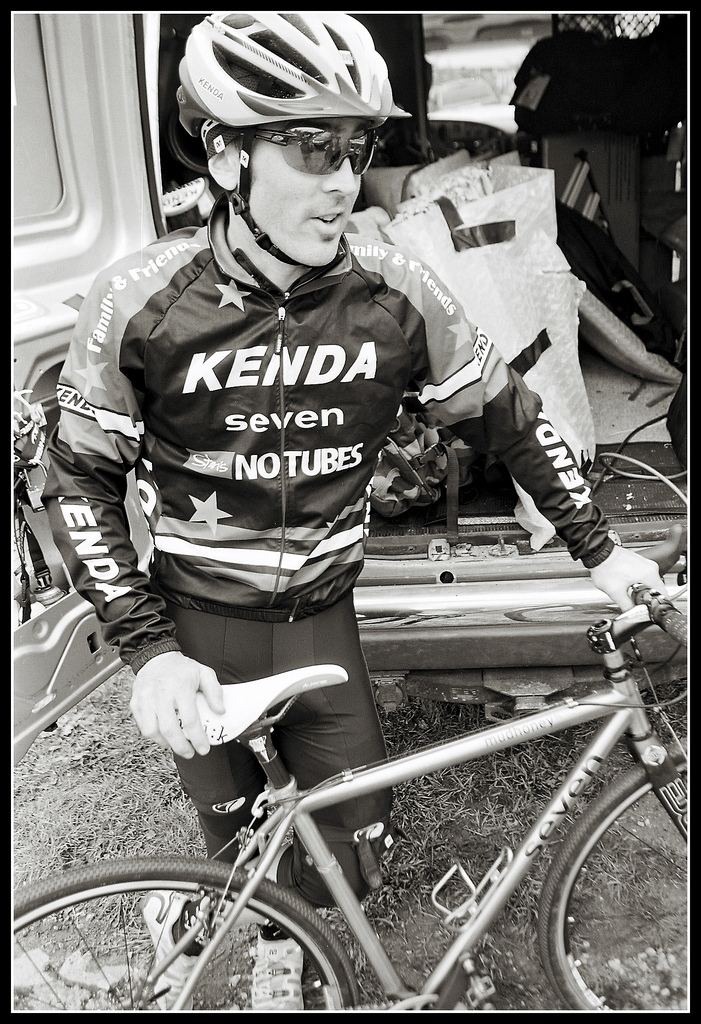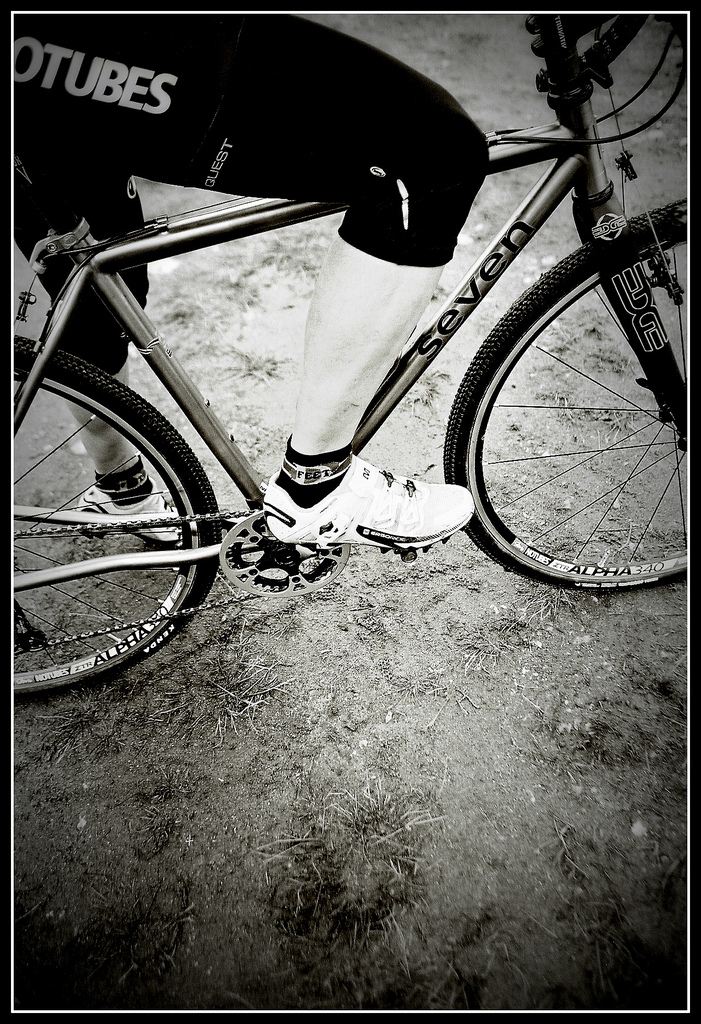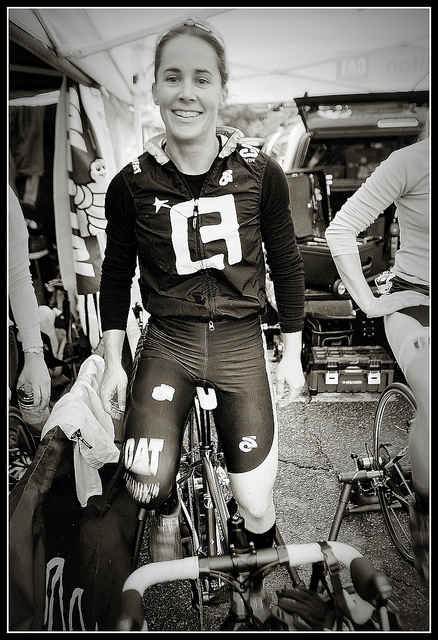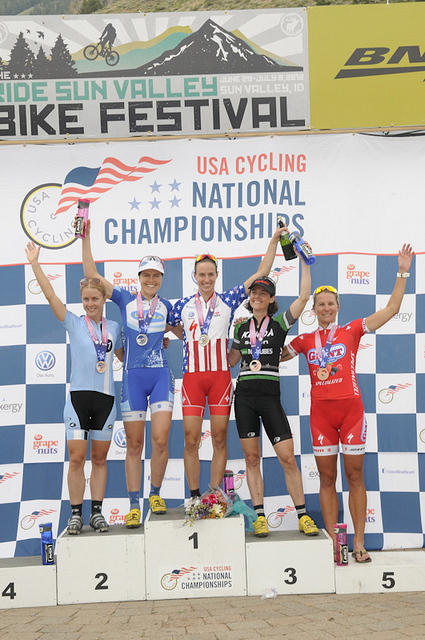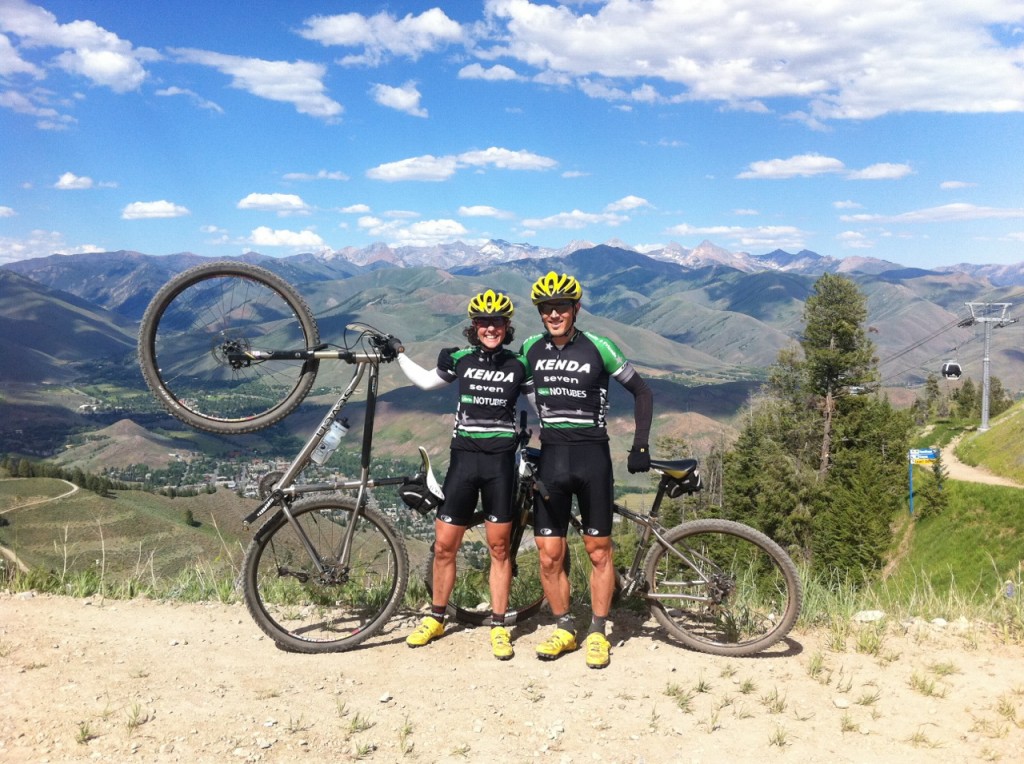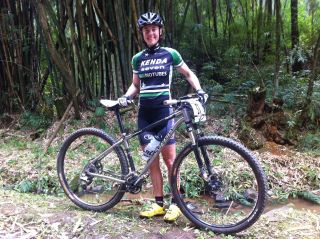Tag: Team KENDA/Seven/No Tubes
Gran Prix of Gloucester CX – Photos by Matt O’Keefe
Seven founder and production manager Matt O’Keefe has a long history behind the camera. Here are some recent black-and-white film shots he took at the Great Brewers Gran Prix of Cyclocross at Stage Fort Park in Gloucester. Stay tuned for the color shots. Find more here.
Team Kenda Seven No Tubes at 2012 USA Cycling MTB CC National Championships!
Mary McConneloug and Mike Broderick took the 2012 USA Cycling Mountain Bike Cross-Country National Championships in Sun Valley, Idaho by storm last weekend!
On Saturday, July 7, Mary raced to a podium finish taking the 5th position in the Women’s Pro Cross Country race. Later in the afternoon Mike put in a solid performance finishing 17thoverall in the Men’s Pro Cross Country field. On Sunday morning, Mike raced to a 12th place finish in the Pro Men’s Super D and returned in the afternoon to take 19th place in the Pro Men’s Short Track Cross Country race. Mary raced in Sunday afternoon’s Women’s Pro Short Track Cross Country field and took a podium spot and bronze medal in her race!
Here is what Mary had to say about the races in sunny, parched Idaho:
“It is high and super dry out here with little chance of badly needed precipitation. The XC course consists of a single steep fire road climb that sorts everything out before dropping us into a no passing single track descent. It makes for some hard racing at this altitude but it was a good weekend and we are both stoked to be healthy and fit!”
At Nationals, Cycling Dirt interviewed Mike about his IMX SL 29er. Mike raced all of three races on this bike, and we are happy to hear he’s satisfied with its performance.
Mike Broderick and Mary McConneloug Proto IMX 29ers, Part Two of Two: The Feedback
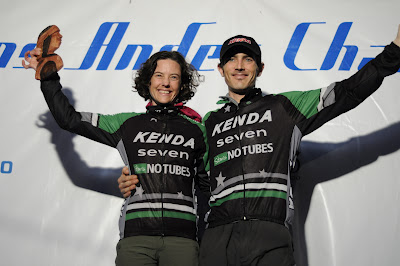
It’s hard to transition from Chile to Northern California to South Africa with a stable of race bikes, enough tools to build them up and break them down, all the other clothing and gear you need, and a shred of remaining sanity to carry you through the first mountain bike World Cup race of the season.
But that’s exactly what Seven riders Michael Broderick and Mary McConneloug did over the last 6 weeks, and their brand new Seven IMX SLX race bikes went along for a maiden voyage on some of the most challenging dirt in the world.
Mike reported back to us from the post-race wind down in South Africa:
“Mary and I literally turned hundreds of heads as we spent the weekend on our new IMX bikes at the World Cup in Pietermaritzburg. The bikes stand apart visually from our previous frames and the majority of the bikes being used by our competitors. The carbon Ti lugged IMX frame design is visually stunning and we were able to build these bikes up to the limit. They really look fantastic!â€
If looks could kill, they wouldn’t have the race though. Mike added, “Those capable of looking beyond the initial bling (including all our on-site sponsors) were impressed especially by the inclusion of the 44mm head tubes as these (or alternative oversize head tubes) are fast becoming an industry standard.â€
We built these bikes specifically to give Mike and Mary critical advantages in the toughest race conditions and according to Mike, performance improvements were obvious straight away. “The bikes ride with a lighter touch. Changing directions requires less effort in tight, low-speed situations, and they exhibit an overall greater level of confidence, inspiring control throughout the majority of demanding off-road situations.â€
Mike and Mary are particularly agile riders, so we aimed for a more lively ride, an overall more manageable bike for all trail purposes, which meant shortening the chain stays for maximum obstacle clearance capability. Mike said, “Mary and I both feel an increased ease when we lift up and over obstacles. Mary was especially tuned in to the ease of being able to manual her bike over trail obstacles without pedal input. This allows for a quicker trail read as last minute input and corrections are more significant and accurate. This, along with the stiffer front end, translates into greater confidence when hanging it out at high speed.â€
He also said,
“The bikes absolutely track quicker around corners when traditionally steered (cutting through the apex) as well as with our preferred hairpin corner attack (hugging the inside of the corner before the apex, steering the front wheel through while initiating a rear brake skid to slide the rear). We both have a good stable feeling on these bikes enabling us to keep our feet clipped in while performing this move all the way through to letting off the brake, regaining traction and pedaling out for a quick exit.â€
How’s that for a pro maneuver?
Shorter chain stays and subsequently shorter overall wheelbase make the bike more agile, but the oversized head tubes give them maximum stiffness and stability. Mike and Mary appreciated that stability as well.
Mike said,
“The increased front end stability is probably most apparent when muscling the bike through low speed trail obstacles that take maximum strength and input on the bars and pedals at the same time. A good example would be when out of the saddle splitting a large trail feature (between the tires) and torquing the pedals and the bars simultaneously to try and move forward. I can feel that there is far less flex and a better power transfer in these cases. The increased stiffness at this point also really helps with the confidence when in a rough spot and looking to commit to a feature that is at the limits of our confidence levels.â€
As you can imagine we’re anxious to see how the bikes perform at the next round of the World Cup in Houffalize, Belgium next month. As we type, Mike and Mary are getting their gear together, breaking everything down again for shipping and trying to keep their bodies on track for what promises to be a grueling and exciting MTB season.
Mike Broderick and Mary McConneloug’s Proto IMX 29ers, Part One of Two
When we sat down to design new bikes for Mike Broderick and Mary McConneloug to race in the upcoming World Cup mountain bike season and possibly the Olympics, the big question was how to improve on the bikes they’d been riding for the two previous seasons.
Their all Ti Sola SLXs have been race winners. When most other riders on the circuit were trying to pack more carbon onto their bikes, Mike and Mary persisted, quite successfully, with titanium. We went to the absolute limit of our building experience to make those bikes light for them. We shaved down their cable guides. We drilled holes in their bottom brackets. But they were all metal bikes. And they were fast.
So, the biggest change they made from past seasons was to go to a Ti/carbon mix frame, our IMX SLX, but without the integrated seat post (ISP) that distinguishes that model. Instead Mike and Mary opted for an adjustable 30.9mm post that is fatter, stiffer and has a thinner-walled carbon than standard seat posts. The weight savings and added stiffness were big bonuses, and we ultra-butted all the frame tubing to save every last gram for them.
Mike knew he wanted to experiment with shorter chain stays to optimize front end maneuverability. A shorter overall wheelbase lets you make tighter turns on technical courses, and the agility he hoped to gain suits both Mike’s and Mary’s aggressive riding style.
To dial in the chain stay length we built multiple rear end modules to test the interaction and spacing of wheels, tires and components. It’s a game of millimeters, but over time we settled on the right set up for them, and then built their bikes based around that rear triangle.
Mike and Mary also knew they wanted to add over-sized head tubes and tapered forks for extra front end stiffness, and they wanted an opportunity to experiment with Cane Creek’s new angled headset. As an inveterate tinkerer, Mike thought he and Mary could both dial in the handling response they liked for each course. Being able to adjust that responsiveness might be a huge advantage in the variable weather conditions they see while racing in Europe, Africa and South America.
The final act was getting the bikes in their hands. We shipped them out to coincide with a short stopover in California, between their pre-season training in Chile, where they won the Mixed Open category of the Trans-Andes Challenge, and the first World Cup race of the year in Pietermaritzburg, South Africa.

